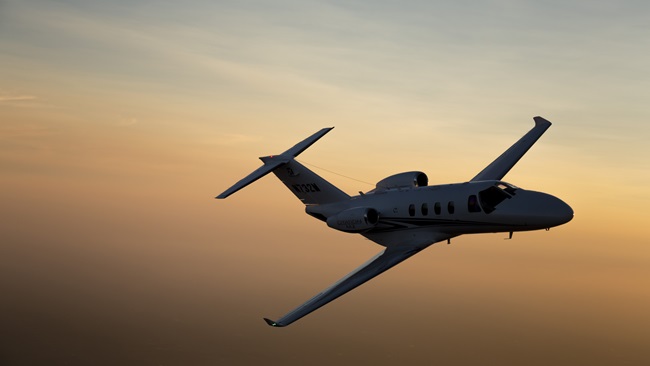Quick Look: IAI Galaxy/Gulfstream 200
A star player in the super-midsize category

Israel Aircraft Industries (IAI) had its Astra SPX with good performance and a mid-size cabin, but lacked anything larger. In response, IAI announced in 1992 plans for the Model 1126 Galaxy, which promised a super-midsize cabin and long range. After some funding and manufacturing fits and starts, the Galaxy made its first flight in late 1997 and was certified a year later. Customer deliveries finally occurred in 2000.
The Galaxy used an all-new, larger, longer, and wider cabin placed on the basic Astra wing. With the added weight, the Astra wing required some tweaks to strengthen it and provide more lift, including Krueger flaps that were added to the inboard leading edges—similar to those seen on the Boeing 727 and 737 models. There also are four spoilers; the two inboard panels provide an effective ground lift dump. Because of the added weight and slim, swept wing, Galaxies are not the best runway performers. Balanced field length is 6,600 feet.
On the other hand, the small wing leads to high speed and a good ride through turbulence, thanks to high wing loading. Maximum cruise speed is a claimed 470 KTAS/Mach 0.84, but typical operational speeds are Mach 0.75 to Mach 0.80, depending on load and range needs. Again, the small wing reveals its limitations when it comes to altitude capability. When loaded up, don’t expect it to climb higher than the mid-30s, step-climbing to the high 30s/low 40s as fuel is burned off.
Avionics consist of five-tube Collins Pro Line 4 with engine-indicating and crew-alerting system and choice of Universal, Rockwell-Collins, or Honeywell flight management systems. Weather radar is Collins TWR 850 with turbulence detection. The Pratt & Whitney Canada PW306A engines are full authority digital engine controlled for operational simplicity. Unlike the Astra SPX, in which an auxiliary power unit was optional, the Galaxy makes it standard equipment. There are three batteries to provide enough power for engine starts if you want to skip using the APU.
Like the Astra, wing deice is achieved using boots rather than bleed air. While bleed air is the more popular and effective deice method, it saps engine power to get the job done.
The real allure of the Galaxy is the large cabin. It has a 6-foot-tall cabin; however, it achieves that by using a trenched floor. Multiple cabin layouts were available at delivery but typically there are eight seats in the back. Baggage is stored in a 125-cubic-foot heated and pressurized bay but it is not accessible in flight. The Galaxy and the Dassault Falcon 2000 are the first super-midsize corporate jets, launching a whole new subdivision of executive aircraft that today is among the hottest market segments. Galaxy also provides true transcontinental ability, boasting a 3,000-nautical-mile range.
Recognizing the airplane’s capability and trailblazing role in launching a new category, in 2002 Gulfstream purchased the Galaxy as well as the smaller Astra SPX, renaming the aircraft G200 and G100, respectively. The Gulfstream purchase brought needed quality improvements, smoothed the manufacturing process, and legitimized the design. It also brought Gulfstream’s legendary service and support. Gulfstream improved and invested in the design, eventually creating the follow-on G280 in 2012, which is still in production today.
Vref values a 2000 model G200 at $2.8 million, ranging up to $6.6 million for a 2011 model.


